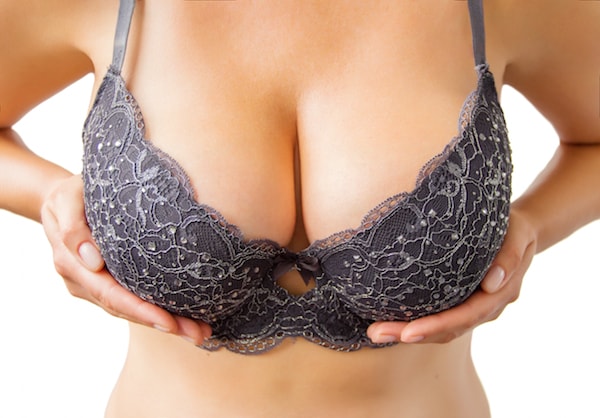Breast Reduction in Riyadh is a surgical procedure designed to reduce the size and weight of large breasts, alleviating discomfort and improving body proportion. This procedure is ideal for individuals experiencing physical pain, posture issues, or self-confidence concerns due to oversized breasts.

Key Points:
- Large breasts can cause back, neck, and shoulder pain.
- The surgery involves removing excess fat, glandular tissue, and skin.
- Breast Reduction in Riyadh enhances comfort and body confidence.
- Understanding the step-by-step process helps in making an informed decision.
Step 1: Initial Consultation and Evaluation
Assessing Candidacy
Before undergoing Breast Reduction in Riyadh, a consultation with a specialist is essential. The surgeon evaluates the patient's medical history, breast size, and overall health to determine if they are a good candidate.
Key Points:
- A physical examination ensures suitability for the procedure.
- The surgeon discusses expected results and potential risks.
- Medical conditions like diabetes or smoking habits may affect eligibility.
Understanding Patient Goals
Every patient has unique expectations regarding breast size and shape. The consultation helps align surgical outcomes with personal goals.
Key Points:
- Patients discuss their desired breast size and aesthetic preferences.
- The surgeon explains how much reduction is possible while maintaining a natural look.
- Digital imaging may be used to preview expected results.
Step 2: Pre-Surgical Preparations
Medical Tests and Pre-Op Guidelines
A set of medical tests is conducted before surgery to ensure the patient’s safety. Blood tests, mammograms, and general health checkups help in planning the procedure.
Key Points:
- Mammograms detect any pre-existing breast conditions.
- Blood tests assess overall health and potential complications.
- Certain medications, such as blood thinners, should be stopped before surgery.
Lifestyle Adjustments Before Surgery
Patients are advised to adopt healthy habits before the procedure to promote better healing. This includes maintaining a balanced diet, avoiding smoking, and staying hydrated.
Key Points:
- Smoking should be stopped at least a few weeks before surgery.
- A healthy diet rich in vitamins aids faster recovery.
- Alcohol and caffeine intake should be minimized pre-surgery.
Step 3: The Breast Reduction Surgery Procedure
Administering Anesthesia
The procedure begins with the administration of general anesthesia to ensure a painless experience. The type of anesthesia used depends on the patient’s medical history and comfort level.
Key Points:
- General anesthesia keeps the patient asleep throughout the surgery.
- The anesthesiologist monitors vital signs during the procedure.
- Some patients may receive sedation based on their medical condition.
Surgical Incisions and Tissue Removal
The surgeon makes incisions based on the chosen technique. The three most common incision patterns are:
- Anchor-shaped incision – For significant reductions.
- Vertical incision – Suitable for moderate reductions.
- Periareolar incision – Minimal scarring, used for small reductions.
After making incisions, the surgeon removes excess breast tissue, fat, and skin, reshaping the breasts to a proportional size.
Key Points:
- The incision type depends on the amount of reduction needed.
- Excess skin and glandular tissue are removed for a smaller breast size.
- The nipple may be repositioned to maintain a natural appearance.
Closing the Incisions and Bandaging
Once the reshaping is complete, the surgeon closes the incisions using sutures. Bandages and a surgical bra are applied to support the healing process.
Key Points:
- Internal stitches provide long-term support to breast tissues.
- External sutures may dissolve naturally or need removal after a few weeks.
- A compression garment minimizes swelling and promotes healing.
Step 4: Post-Surgery Recovery and Healing
Immediate Post-Surgical Care
After Breast Reduction in Riyadh, patients are closely monitored in the recovery room before being discharged. Some discomfort, swelling, and bruising are normal.
Key Points:
- Pain medication is prescribed to manage discomfort.
- Patients may experience temporary numbness or sensitivity in the breasts.
- Light movement is encouraged to prevent blood clots.
Managing Swelling and Discomfort
Swelling and bruising gradually subside within a few weeks. Wearing a supportive bra and following post-operative care instructions helps in a smooth recovery.
Key Points:
- Ice packs can help reduce swelling in the first few days.
- Patients should avoid heavy lifting and strenuous activities.
- Sleeping on the back prevents pressure on the healing tissues.
Step 5: Long-Term Results and Maintenance
When to Expect Final Results
Initial results are visible within weeks, but full healing can take several months. Scars gradually fade over time with proper care.
Key Points:
- Most swelling subsides within 6-8 weeks.
- Final breast shape settles after 6 months to a year.
- Scar care treatments, such as silicone sheets, can minimize scarring.
Maintaining the Results
To maintain the results of Breast Reduction in Riyadh, patients should adopt a healthy lifestyle, including weight management and regular exercise.
Key Points:
- Significant weight fluctuations may alter breast size.
- Wearing a supportive bra helps maintain breast shape.
- Regular follow-ups ensure long-term breast health.
Conclusion
Breast Reduction in Riyadh is a life-changing procedure that enhances physical comfort and boosts self-confidence. By understanding the step-by-step process, patients can make informed decisions and prepare for a successful surgery and recovery.
Key Takeaways:
- The procedure involves consultation, preparation, surgery, and recovery.
- Choosing the right technique ensures optimal results.
- Following post-operative care guidelines leads to a smooth recovery.
For individuals struggling with discomfort due to large breasts, this procedure offers long-term relief and aesthetic benefits, contributing to an improved quality of life.

